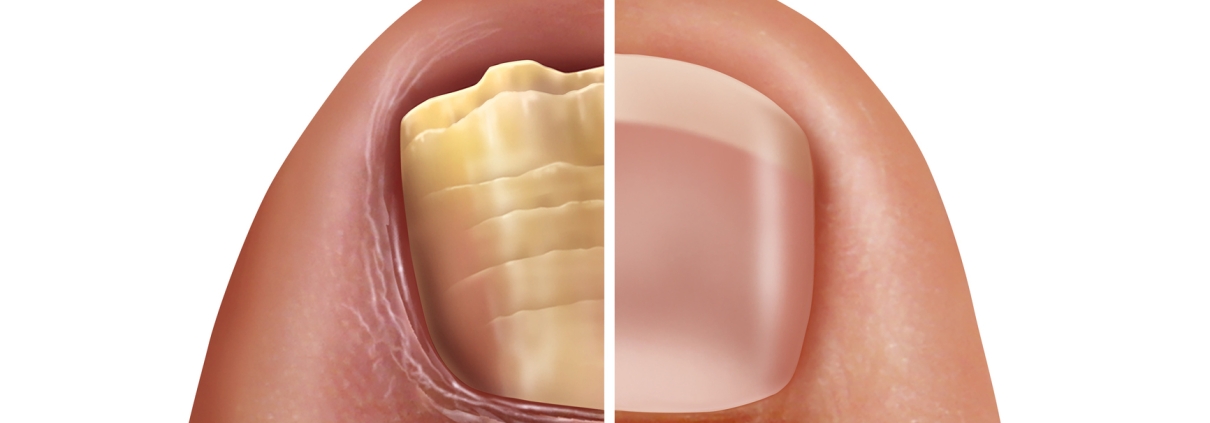Nail Fungus
Nail fungus, also known as onychomycosis, is a common condition that affects millions of people worldwide. While it can affect both fingernails and toenails, fingernail fungus tends to be less common but no less concerning. This fungal infection can cause the nail to become discolored, thickened, brittle, and even painful if left untreated. While it is not usually a serious condition, nail fungus can be persistent and difficult to treat.
In this article, we will dive into the causes, symptoms, prevention, and treatment options for nail fungus to help you maintain healthy, strong nails.
Causes of Nail Fungus
Fungal infections are caused by microscopic organisms that thrive in warm, moist environments. Several factors can contribute to the development of nail fungus:
Fungal Organisms: Dermatophytes are the most common fungi that cause nail infections. These fungi can spread through direct contact with infected surfaces, such as contaminated nail tools, towels, or floors in communal areas like gyms or swimming pools.
Moisture and Humidity: Prolonged exposure to moisture or wearing gloves for extended periods creates an environment where fungi thrive. Sweat and water can get trapped around the nails, allowing the fungus to grow.
Weakened Immune System: Individuals with weakened immune systems due to illness, diabetes, or age are more susceptible to nail fungal infections.
Nail Injuries: Trauma or damage to the nail can create an entry point for fungi, making it easier for the infection to take hold.
Poor Nail Hygiene: Not keeping the nails clean, dry, and properly trimmed can increase the risk of fungal infections.
Manicures and Pedicures: Using unsanitized nail tools at salons can introduce fungal spores directly to the nail. Artificial nails and gel manicures, if not applied and removed carefully, can also trap moisture under the nail.
Symptoms of Nail Fungus
The symptoms of nail fungus may start subtly but can become more noticeable as the infection progresses. Common symptoms include:
Discoloration: The nail may change color, often turning yellow, brown, or white. As the infection worsens, the discoloration can spread across the entire nail.
Thickened Nails: Infected nails tend to thicken and become distorted, which can make them difficult to trim or maintain.
Brittle or Crumbly Nails: The infected nail often becomes fragile and can chip or crumble easily.
Changes in Nail Shape: The nail may grow irregularly, developing ridges or a bumpy surface. In severe cases, the nail can lift from the nail bed (a condition called onycholysis).
Foul Odor: In some cases, a fungal infection can lead to an unpleasant smell emanating from the infected nail.
Pain or Discomfort: While not always painful, advanced fungal infections can cause discomfort, especially when pressure is applied to the nail.
Treatment Options for Nail Fungus
Treating nail fungus can be challenging due to the slow growth of nails and the tough keratin structure, which makes it harder for antifungal treatments to penetrate deeply. However, there are several options available depending on the severity of the infection:
Topical Antifungal Treatments:
Over-the-counter and prescription topical antifungal creams, ointments, or lacquers are often used to treat mild cases of nail fungus. These treatments are applied directly to the nail and surrounding skin but may require long-term use for effectiveness.
Medicated Nail Lacquer: Some treatments, like ciclopirox nail lacquer, can be applied like nail polish and slowly help reduce the fungal infection over time. Regular application is necessary for several months.
Oral Antifungal Medications:
For more severe infections, oral antifungal medications such as terbinafine or itraconazole are often prescribed. These medications work from the inside out, helping the body eliminate the fungal infection more effectively.
Oral treatments are typically taken for 6-12 weeks, but it can take several months for the infected nail to fully clear and regrow.
Laser Therapy:
Laser treatment is a newer, non-invasive option for treating nail fungus. The laser targets and kills the fungus without damaging the nail or surrounding tissue. While some studies suggest it can be effective, it is often more expensive and not always covered by insurance.
Nail Removal:
In cases where the infection is severe and resistant to other treatments, a doctor may recommend removing the nail entirely. This can be done surgically or chemically. While this method removes the infected nail, it takes time for a new, healthy nail to grow back.
Home Remedies:
Some people try natural remedies such as tea tree oil, vinegar soaks, or essential oils like oregano and eucalyptus. While these may provide some relief for very mild infections, they are generally not as effective as medical treatments and should be used with caution.
Prevention of Nail Fungus
Preventing nail fungus is much easier than treating it. Here are some key steps to keep your nails healthy and fungus-free:
Keep Nails Clean and Dry: Regularly wash your hands and feet, especially after sweating. Be sure to dry them thoroughly, paying close attention to the spaces between your fingers and toes.
Trim Nails Properly: Keep nails trimmed short, but avoid cutting them too close to the skin. Clean and disinfect nail clippers and tools after each use to prevent spreading fungal spores.
Avoid Moisture Exposure: Limit prolonged exposure to moisture. If you frequently wear gloves for work, make sure to dry your hands and nails thoroughly afterward.
Choose Breathable Footwear: Wear shoes that allow air to circulate and avoid keeping your hands or feet in damp, enclosed environments for long periods.
Avoid Sharing Personal Items: Do not share towels, nail clippers, or footwear with others, as these can transfer fungal spores from one person to another.
Careful with Manicures and Pedicures: Ensure that nail salons use sanitized tools or bring your own to reduce the risk of fungal infection.





